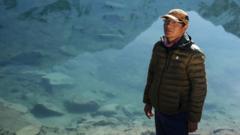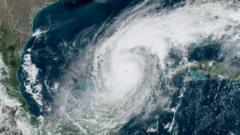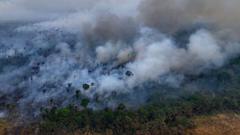Research indicates that while glaciers are on a trajectory to shrink significantly regardless of climate efforts, targeting a limit of 1.5 degrees Celsius can significantly reduce ice loss over the long term, highlighting the urgent need for global climate measures.
Glaciers Face Inevitable Melting, But Action Can Mitigate Losses

Glaciers Face Inevitable Melting, But Action Can Mitigate Losses
A recent study reveals that glaciers will continue to lose mass for centuries, even with immediate climate action, yet emphasizes the importance of limiting global warming to preserve these critical ice sources.
The latest research confirms a troubling reality: the world's glaciers are destined to lose a substantial amount of their ice, even if global temperatures were to stabilize immediately. Published on Thursday, this study sheds light on an unsettling aspect of climate change: the inevitability of glacial melting.
Researchers estimate that if global temperatures were to remain stable for a millennia, which is practically unachievable, glaciers outside of ice sheets would still lose approximately one-third of their mass. However, there remains a possibility to limit the most drastic losses, as evidenced by the data suggesting that keeping global warming to 1.5 degrees Celsius, or 2.7 degrees Fahrenheit, above preindustrial levels could preserve twice as much ice compared to a scenario in which warming rises to 2.7 degrees Celsius—currently projected for 2100.
Lilian Schuster, a glacial modeler from the University of Innsbruck and a lead author of the research published in the journal, Science, emphasized, “Every tenth of a degree less of warming will help preserve glacial ice.” The findings reinforce the necessity of ambitious climate initiatives to salvage crucial ice reserves.
While the focus often falls on vast ice sheets in Antarctica and Greenland with the potential to raise sea levels significantly—over 200 feet—glaciers located on mountaintops and adjacent to ice sheets also play a vital, though small, role in the global climate equation. They constitute less than half of one percent of the world’s total ice, yet their melting could contribute around a foot to rising sea levels.
As nations grapple with the complexities of climate change, understanding the fate of glaciers and the broader implications of their melting remains essential to formulating effective responses.




















